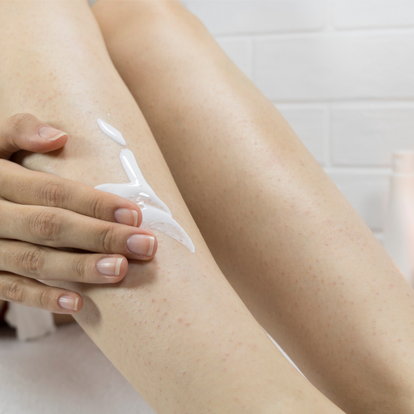 OVERVIEW
OVERVIEW
About 40% of adults worldwide develop some sort of Keratosis Pilaris in their lifetime. Seven in every ten teenagers are affected by the condition. While this skin condition is not harmful and doesn’t need to be treated, it can be quite annoying. Most people with the condition find out that the symptoms disappear by the time they are thirty. As this condition is most evident in dry skin, healthcare providers recommend using moisturizers as a treatment. Shorter showers can also help to relieve the symptoms.
What is Keratosis Pilaris?
Keratosis Pilaris is a skin condition that results in the formation of tiny, rough bumps on the skin’s surface. These bumps are painless, harmless, red, white, brown, or skin-colored. The bumps are mostly found on the arms, cheeks, legs, and buttocks and have the appearance of goosebumps. This is why some refer to them as chicken skin. Children and teenagers are most likely to develop Keratosis Pilaris, with the condition worsening during puberty. Studies have revealed that people with fair skin, dry skin, and eczema are more likely to develop this condition. Obese people and those with asthma are also more likely to develop Keratosis Pilaris.
What are the Symptoms and Causes of Keratosis Pilaris?
Keratosis Pilaris develops when dead skin cells refuse to fall off the skin and block the pores instead. While this is known, the exact trigger for the condition is unknown. If you have Keratosis Pilaris, you will have bumps on your skin, particularly around your arms, legs, and buttocks. You may also notice that the bumps worsen during the winter and when the air is dry. Keratosis Pilaris is painless, but you may sometimes experience itchiness in the areas with the bumps.
How is Keratosis Pilaris Diagnosed?
Keratosis Pilaris can often be diagnosed without medical testing as most symptoms can be observed physically. Your healthcare provider will only conduct a physical examination to diagnose the skin condition. The physical examination will involve a check of the location of the bumps and how they feel and look. Bumps caused by Keratosis Pilaris will be painless, and no discomfort is felt when pressure is applied to them. The bumps will have a sandpaper texture and feel dry to the touch.
How can Keratosis Pilaris be Treated?
Most people do not have to treat Keratosis Pilaris as there are no side effects. However, if you are bothered by the appearance, your healthcare provider may recommend that you apply a moisturizing lotion. As Keratosis Pilaris is worse on dry skin, keeping the skin hydrated as a treatment for it makes sense. You may also be advised to cut down on your time in the shower, limiting your shower time to 15 minutes or less.
Other treatments include medicated creams, particularly ones that contain urea and alpha-hydroxy acids, which have been found to improve the appearance of skin affected by the condition. You are, however, advised to use these creams in moderation so as not to irritate your skin. You should, however, note that these treatment methods have permanent effects, and you will have to do them routinely to notice their effects.
Keratosis pilaris is typically a temporary skin disorder that fades with time. It usually has no serious symptoms. However, if you experience itchy or dry skin, make sure to contact your physician. There are numerous treatment methods available to help you feel better.

